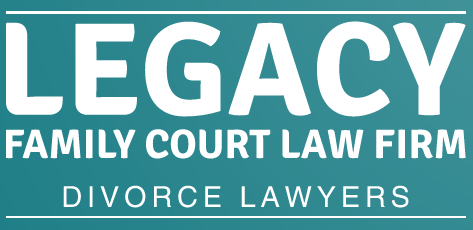Secure Child Maintenance: Legacy Family Court Law Firm: Chennai Divorce Experts understands the profound importance of securing a child’s financial future after parental separation. Indeed, a child’s right to maintenance is a fundamental aspect of family law. Consequently, the Hindu Adoption and Maintenance Act, 1956 (HAMA), provides a crucial legal framework. Therefore, it ensures that children receive necessary financial support from their parents. Our firm actively guides clients through this vital process. We ensure children’s welfare remains paramount.
Secure Child Maintenance Under the Hindu Adoption and Maintenance Act: Legacy Family Court Law Firm
The Foundation of Child Maintenance in India
Child maintenance refers to the financial support provided by parents for the upbringing and welfare of their children. In India, this right is enshrined in various statutes. Firstly, Section 125 of the Code of Criminal Procedure, 1973 (CrPC), offers a secular remedy for maintenance. It covers wives, children, and parents. Secondly, specific personal laws govern maintenance for different religious communities. For Hindus, the Hindu Adoption and Maintenance Act, 1956, is paramount. This Act applies to Hindus, Jains, Buddhists, and Sikhs. It specifically addresses maintenance obligations. Consequently, understanding the nuances of HAMA is essential for securing a child’s rightful support.
Who is Obligated to Maintain a Child Under HAMA?
The Hindu Adoption and Maintenance Act, 1956, clearly outlines the obligation to maintain a child. Section 20 of HAMA explicitly states that a Hindu is bound to maintain his or her legitimate or illegitimate children. This obligation continues during their minority. It also extends to an unmarried daughter who is unable to maintain herself from her own earnings or other property. Therefore, both parents have a statutory duty to provide support. This duty arises from the parent-child relationship itself. It is not contingent upon marriage. Furthermore, the Act covers adopted children as well. An adopted child has the same rights to maintenance as a natural-born child. This ensures parity in legal standing.
What Constitutes “Maintenance” Under HAMA?
Section 3(b) of the Hindu Adoption and Maintenance Act defines “maintenance” broadly. It includes various necessities for a child’s upbringing. Specifically, it covers provisions for food, clothing, residence, education, and medical attendance. Furthermore, in the case of an unmarried daughter, it also includes the reasonable expenses of and incidental to her marriage. Therefore, the scope of maintenance extends beyond basic survival. It encompasses a standard of living appropriate for the child’s circumstances. Courts consider various factors when determining the quantum of maintenance. These factors ensure a fair and adequate sum is awarded.
Factors Determining the Quantum of Maintenance
When a court determines the amount of maintenance payable to a child under HAMA, it considers several critical factors. Section 23 of the Act provides guidance on this assessment.
- Position and Status of the Parties: The financial standing and social status of both the claimant (child, represented by a parent/guardian) and the obligated parent are crucial.
- Reasonable Wants of the Claimant: The actual needs of the the child, including educational expenses, medical care, and lifestyle, are assessed.
- If the Claimant is Living Separately: The reasons for the child living separately from the obligated parent, if applicable.
- The Value of the Claimant’s Property and Income: Any independent income or property owned by the child is taken into account.
- The Number of Persons Entitled to Maintenance under the Act: If the obligated parent has other dependents, this is also considered.
- The Income and Property of the Person Obligated to Maintain: This is a primary factor. The court assesses the earning capacity and assets of the parent from whom maintenance is sought.
Consequently, courts conduct a detailed inquiry into these aspects. They strive to arrive at a fair and equitable maintenance order. This ensures the child’s best interests are served.
Initiating a Claim for Child Maintenance
Securing child maintenance under HAMA typically involves filing a petition in the appropriate Family Court. Legacy Family Court Law Firm guides clients through each procedural step.
- Jurisdiction: The petition must be filed in the Family Court having territorial jurisdiction. This is usually where the child resides or where the obligated parent resides, or where the cause of action arose.
- Drafting the Petition: A comprehensive petition must be drafted. It clearly states the relationship between the parties. It outlines the child’s needs. It also details the obligated parent’s financial capacity. Furthermore, it explicitly seeks maintenance under HAMA. The petition must include supporting affidavits and relevant documents.
- Documentary Evidence: Crucial evidence includes income proof of the obligated parent (salary slips, bank statements, income tax returns), expenditure details for the child (school fees, medical bills), and any property documents.
- Interim Maintenance: Pending the final disposal of the maintenance petition, the court can grant interim maintenance. This provides immediate financial relief to the child. An application for interim maintenance (under Section 24 of HAMA or other relevant provisions) can be filed along with the main petition. Courts generally prioritize such applications. They recognize the immediate needs of children.
- Court Proceedings: Both parties present their arguments and evidence. This includes cross-examination of witnesses. The court assesses all submitted material. It then passes a final order determining the quantum and periodicity of maintenance.
Enforcement of Maintenance Orders
Obtaining a maintenance order is only half the battle. Enforcement is equally crucial. If the obligated parent fails to comply with the court’s order, legal recourse is available.
- Execution Petition: The recipient can file an execution petition in the same Family Court. This seeks to enforce the order. The court can attach the property of the defaulter. It can also order the attachment of their salary.
- Contempt of Court: Persistent non-compliance can lead to contempt of court proceedings. The defaulter may face civil imprisonment or fines.
- Section 125 CrPC: While HAMA is a civil remedy, concurrent remedies exist. A separate application can be filed under Section 125 CrPC. This provides a more expeditious enforcement mechanism. Default under Section 125 CrPC can lead to warrants for arrears and even imprisonment. Therefore, this dual approach offers robust enforcement options.
Challenges and Recent Developments
Despite the clear legal provisions, securing child maintenance can present challenges. These include non-disclosure of income by the obligated parent, delays in court proceedings, and enforcement difficulties. Courts have, however, taken a proactive stance. They issue directions for comprehensive affidavits of assets and liabilities. This promotes transparency in financial disclosure. Furthermore, recent judicial pronouncements emphasize the paramount importance of the child’s welfare. They reiterate the non-derogable nature of the maintenance obligation. The Supreme Court has repeatedly affirmed that a child’s right to maintenance is absolute. It is not dependent on the matrimonial disputes between parents.
The focus is increasingly on ensuring the child’s right to a lifestyle commensurate with the parent’s financial capacity. This means that a parent cannot shirk their responsibility by deliberately reducing income or concealing assets. Courts often impute income based on qualifications and past earnings. This ensures that a parent’s deliberate inaction does not prejudice the child’s financial well-being.
Role of Legacy Family Court Law Firm
Legacy Family Court Law Firm: Chennai Divorce Experts possesses extensive experience in handling child maintenance cases under the Hindu Adoption and Maintenance Act. Our advocates offer specialized guidance. We meticulously prepare petitions. Gather comprehensive evidence. We effectively represent clients in court. Furthermore, we pursue stringent enforcement actions when necessary. We understand the emotional and financial strain faced by parents seeking support for their children. Therefore, we provide compassionate yet firm legal representation. Our goal is to secure the best possible financial outcome for the child. We champion their rights. We safeguard their future.
Frequently Asked Questions
Under Section 20 of HAMA, both a Hindu father and mother are legally bound to maintain their legitimate or illegitimate children during their minority. This obligation also extends to an unmarried daughter who is unable to maintain herself. Adopted children have the same rights to maintenance as natural-born children.
As per Section 3(b) of HAMA, “maintenance” broadly includes provisions for food, clothing, residence, education, and medical attendance. For an unmarried daughter, it additionally covers reasonable expenses for and incidental to her marriage. The definition aims to ensure a standard of living appropriate to the child’s circumstances.
Courts consider several factors under Section 23 of HAMA, including the financial position and status of both parents, the reasonable needs of the child (e.g., educational and medical expenses), any independent income or property of the child, and the income and property of the parent obligated to maintain, ensuring a fair and adequate sum.
Yes, while a final maintenance petition is pending, the court can grant interim maintenance. This provides immediate financial relief to the child. An application for interim maintenance can be filed along with the main petition, and courts generally prioritize such applications given the urgent needs of children.
If a parent defaults on a HAMA maintenance order, the recipient can file an execution petition in the Family Court to enforce the order, potentially leading to attachment of the defaulter’s property or salary. Additionally, persistent non-compliance can lead to contempt of court proceedings or a separate application under Section 125 of the CrPC for more expeditious enforcement, including imprisonment for arrears.
Conclusion
Securing child maintenance under the Hindu Adoption and Maintenance Act is a critical legal right. It ensures that children receive essential financial support for their upbringing and welfare. The Act provides a robust framework. It defines obligations, outlines what constitutes maintenance, and guides courts in determining quantum. While challenges exist, the proactive stance of courts and the availability of strong enforcement mechanisms empower recipients. Legacy Family Court Law Firm: Chennai Divorce Experts stands ready to assist. We help you navigate these complex legal processes. We ensure your child’s right to maintenance is not merely a legal provision but a secured reality. Are dedicated to protecting the financial future of your children. We remain committed to justice in every family matter.
Read More
- Alimony Rights Under Section 24 of the Hindu Marriage Act
- Seek Justice in Family Matters Under the Family Courts Act
- Resolve Matrimonial Disputes Under the Family Courts Act, 1984
- Guardianship and Child Custody Under the Hindu Minority and Guardianship Act
- Fight Domestic Abuse Under Sections 85 and 86 of the Bharatiya Nyaya Sanhita (BNS)
- National Legal Services Authority (NALSA):


